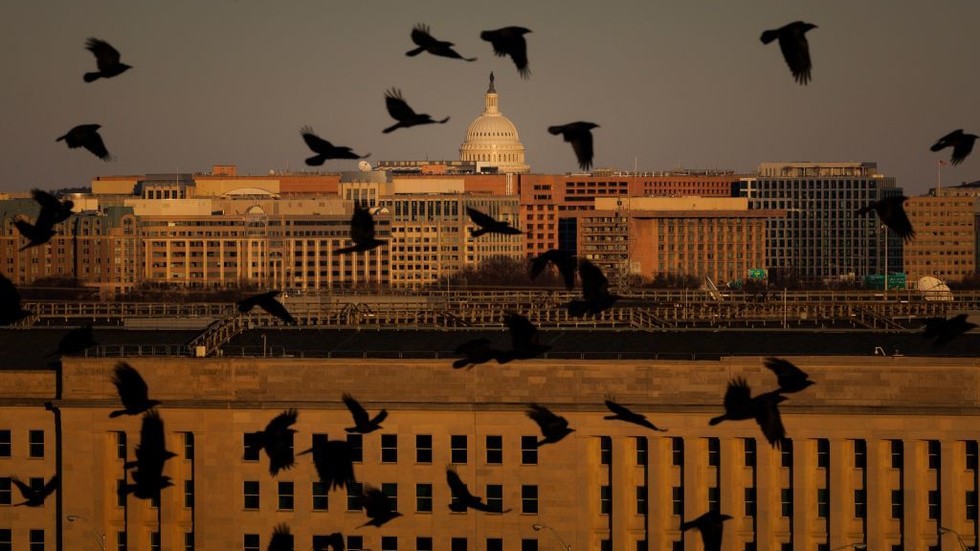Thea Kellock and Eden McLeod
BBC Scotland News
Furries first emerged as a subculture in the 1980s
Fennick Firefox, a man dressed as a large furry orange fox with blue hair and a tail tipped by a flame, says that in his normal life he is very shy person.
But after he adopts his "fursona", he is dancing in the street and sharing a long hug with his best friend Rock, who is dressed as a giant red and black German Shepherd.
"It's like a superhero cape," says Fennick.
"When I put my fox head on, the person is gone - he does not exist."
Fennick says that being in costume allows him to escape his everyday struggles and "do nothing but be happy".
That's what has brought him to Scotland's largest furry convention - Scotiacon.

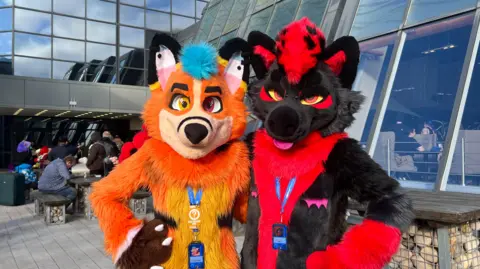
Fennick Firefox and his best friend Rock met at the convention last year
Outside the Glasgow hotel where the event is held, hundreds of people dressed in costumes ranging from a rabbit in military uniform to a unicorn with a magic wand have gathered along the banks of the Clyde.
Passers-by dodge a pack of giant multi-coloured dogs as they pose with each other in a group selfie.
A few metres away a group consisting of a bull with pink ears and a husky in a wizard's hat dance along to an accordion being played by a person in a large cartoon fox head.
Scotiacon's co-director, Jeremy Smith, says the event is an opportunity to "forget the real world for a weekend".
The 45-year-old says: "You can go and be this big colourful animal that has no worries in the world and can just disconnect.
"I think a lot of people come along for that."

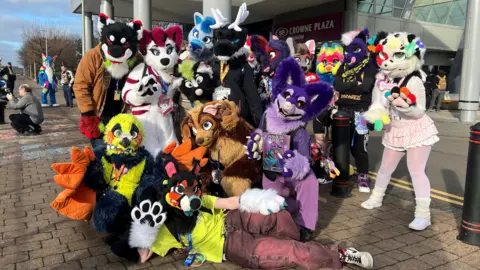
Many furries prefer to keep their real identities secret
Scotiacon first launched in Inverness in 2011 but this year's four-day convention is expected to be the largest yet, with 1,700 attending.
"It's an opportunity to be silly for a weekend, where no-one is judging you," Mr Smith says.
It features events such as a cash-free casino night, an art auction, fanfiction writing panels, a rave and a wine and cheese reception.
However, the convention and the furry fandom more widely is regularly the subject of controversy.
It is often associated with sexual fetishism and members of the fandom have been accused of being sexual "deviants" or misfits.
The convention does host events such as "writing furry erotica" but Mr Smith insists that furries are "badly represented" in the media and that fetishism is "not part of the furry identity".
"We are one of the most misrepresented communities, and almost always in a negative way - it's largely because people fear what they don't know," he says.
"We're used to people saying 'look at this debauchery', but we aren't a fetish event, it's not what the convention is about."
Fennick the firefox says it is just a hobby.
"It is no different to an anime convention or a comicon convention," he says.

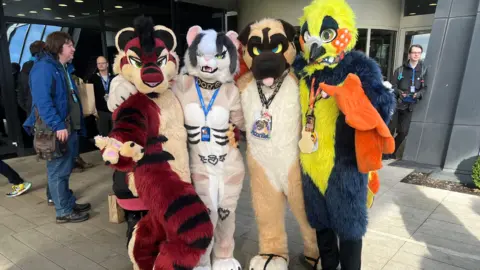
Many attendees say they have built life-long friendships at the event
Furries first emerged as a subculture in the 1980s after anthropomorphic creatures began appearing as characters in science-fiction comics and fan art.
Fans of the characters soon started dressing as animals, ranging from cats and dogs to more fantastical creatures such as dragons and unicorns, and calling themselves furries.
The furry community, or "fandom", gained popularity with the growth of the internet and it is estimated that there are now hundreds of thousand of furries worldwide.
Furries say that they do not identify as animals, and many liken the activity to cosplaying (the practice of dressing up as a character from a film, book or video-game).
The costumes, or "fur suits", can often cost thousands of pounds and many are handmade.

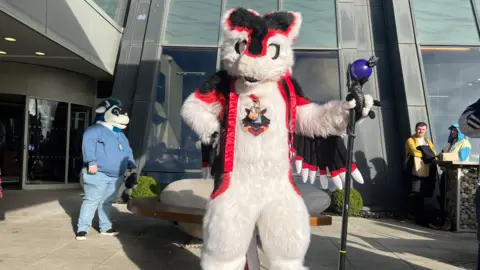
This year's Scotiacon theme was "magical mayhem"
Inside the convention hall, an octopus and a parrot casually drink a glass of wine together.
Rock the German Shepherd says that in everyday life they could be doctors, teachers, engineers or lawyers.
He's met them all at the convention.
"You probably know a furry and don't realise it because we are just everywhere," says Rock who, like Fennick, is not keen to reveal his human identity, preferring to be known by his "fursona".
He says; "We feel free under the fur suits because you don't see what we look like underneath. There is no way to make prejudgments."
Mr Smith also says the event is attended by a "very diverse" audience, which is largely made up of professional people.
"I know a professor who runs a science department in a London university, a nuclear space technician, a businessman who runs a chain of upmarket bakeries," he says.
"It's a very diverse, very accepting community".
Mr Smith himself is an engineer responsible for building military equipment for the UK government.
'Safe space'
He also says that Scotiacon is popular with people with autism and physical and learning disabilities, who see the convention as a "safe space".
He says that wearing a fur suit can allow those who struggle in social settings to be more confident.
"Some members of the fandom cannot even talk to people, but you put them into a fur suit and you could put them on stage tomorrow," he says.
"All the inhibitions are gone, they put on the costume and become a big, bright character. I think that's a large appeal."

 3 hours ago
5
3 hours ago
5









